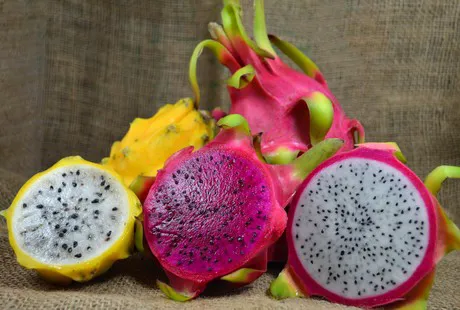Domestic production of Pitahaya, also known as red dragon fruit, is solid.
“Right now, we have excellent supplies,” says Marc Holbik of Miami, Fl.-based Ecoripe Tropicals.
Holbik notes that between the months of July to November, production of the exotic fruit is done domestically in Homestead, Fl. along with supplemental volume from Nicaragua and Ecuador. “Starting in November, we transition to more supplies from Ecuador and Vietnam until our local season comes around again,” he says, noting Ecoripe carries both the red fleshed and white-fleshed red dragon fruit (although the white-flesh variety represents the majority of the volume). He also adds that the fruit fits in with the volume and variety of summer fruits coming out of south Florida right now. While the lychee season has just finished up, Florida is also supplying longans, guavas and mangoes.

Growing and growing demand
Meanwhile, demand for dragon fruit continues to climb. “We have seen impressive growth in demand for dragon fruit in the last five years,” says Holbik. “The fruit is now very common as a flavor in drinks and smoothies. Before, the target market was specifically Asian and Hispanic ethnic markets.”
Holbik also predicts continued growth in demand in the next few years that coincides with retailers gaining more and more experience marketing the product.
In terms of pricing, Holbik notes that summer is the time to put on specials with dragon fruit. “Thanks to the growth of Ecuadorian product during the local off-season, we are now able to offer competitive pricing year round,” says Holbik. “Before, pricing in the winter months used to be very high for the final consumer. Now it is much easier to have a year round program.”
For more information:
Marc Holbik
Ecoripe Tropicals
Tel: +1 (305) 889-1734
marc@ecoripe.com
https://ecoripe.com/
